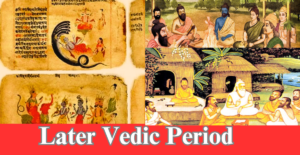Mahajanapadas:
Introduction:
Originating in the 6th to 4th centuries BC, the Mahajanapadas were a collection of powerful and sovereign regional entities that marked the transition from the Vedic period to the development of large political units and states. These sixteen or more republics or kingdoms played an important role in shaping the socio-political dynamics of the Indian subcontinent. The Mahajanapadas saw complex diplomatic and military interactions among themselves, contributing significantly to the historical evolution of the region. A study of the Mahajanapadas is important for understanding the roots of Indian civilization, governance structures and the subsequent rise of empires in ancient India.
History of Mahajanapadas:
The tribes were initially engaged in the process of land grabbing and evolved into well-organized societies.These communities developed into states or “janapadas”, with tribal identity defining territorial boundaries.Some Janapadas expanded and led to the emergence of large states known as “Mahajanapadas”.Tribal settlements were gradually transformed into organized kingdoms seeking prosperity and wealth through amalgamation.The Mahajanapadas engaged in the conquest of neighboring states to expand their kingdoms.Expansion strategies were driven by economic considerations and a desire for regional growth.
Settlement and expansion took place before the Buddha’s time, and references are found in ancient Buddhist texts.These texts mention the emergence of 16 major kingdoms between the 6th and 4th centuries BC.This period is important in early Indian history which saw the rise of massive cities after the decline of the Indus Valley Civilization.These cities became the homes of 16 great kingdoms, marking a significant phase of political and cultural development.In the modern era, the term “Mahajanapadas” generally refers to the 16 great kingdoms mentioned in ancient texts.These kingdoms played an important role in shaping early Indian civilization and are integral to the historical narrative.
Rise of theMahajanapadas:
The use of iron was widely used during this period.Iron plows and tools were developed in abundance, resulting in increased yields and increased food production.They built canals and wells to provide irrigation.Due to this, agriculture was possible even in places where rain did not fall widely.Advances in agriculture led to the emergence of trade in manufactured goods and surplus resources.Cities were formed due to increased annual trade.The same applies to economic activities and the sale of goods.
They built Silk Roads for trade and carried trade over long distances.As a result, the economy and wealth accumulation increased.Small republics began to consolidate territories as tribal kingdoms competed for resources. This led to the emergence of powerful political organizations called Mahajanapatam.Iron weapons and armor further strengthened the soldiers.The various industries of the cities grew and so did the merchants.Jainism and Buddhism gained considerable influence during this period.
Mahajanapadas:
The Mahajanapadas are the earliest recorded political formations in India, emerging in the Indo-Gangetic plains in the 6th century BC.Mahajanapathas The word Maha Ganapati means “Great Empire” or “Great Country“.There were about 16 Mahajanapadas, Magadha, Kosala, Vatsa, Avanti and Guru being some of the most famous Mahajanapadas.The Mahajanapadas were a time of great change and progress in India. They saw the development of agriculture, iron technology and trade. They also saw the rise of new religions like Buddhism and Jainism.The Mahajanapadas were eventually conquered by the Mauryan Empire founded by Ashoka in the 3rd century BC.
16 Mahajanapadas:
| Mahajanapada | Capital | Modern Location | Significance |
| Anga | Champa | Bhagalpur, Bihar | Early republics, trade hub, fertile plains, Jainism flourished |
| Asaka/Assaka | Potali/Podana | Pothabandha, Bangladesh | Maritime trade, early kingdom in Bengal region, iron production |
| Avanti | Ujjaini/Mahismati | Ujjain & Maheshwar, MP | Flourishing trade & agriculture, cultural center, art & literature |
| Chedi | Sothivati | Satna, MP | Iron production, rich agricultural lands, Vedic connection |
| Gandhara | Taxila | Taxila, Pakistan | Crossroads of trade routes, Greco-Buddhist influence, Gandhara art |
| Kamboja | Poonch | Rawalpindi, Pakistan | Horse breeding, Silk Road connections, warrior culture |
| Kashi/Kasi | Kashi | Varanasi, UP | Religious & cultural center, Vedic knowledge, pilgrimage site |
| Kosala | Shravasti, Kushavati | Sahet Mahet & Kasia, UP | Powerful monarchy, rivalry with Magadha, fertile plains |
| Kuru | Indraprastha | Delhi | Legendary Mahabharata location, political struggles, skilled artisans |
| Magadha | Girivraja/Rajagriha | Rajgir, Bihar | Eventually absorbed others, foundation of Mauryan Empire, iron tools |
| Malla | Kusinara | Kasia, UP | Trade & agriculture, birthplace of Mahavira (Jainism), advanced irrigation |
| Matsya | Viratanagara | Bairat, Rajasthan | Ironworking, agriculture, Pandava legends, skilled warriors |
| Panchala | Ahichchatra & Kampilya | Ahichchhatra & Kannauj, UP | Vedic knowledge center, skilled agriculture & trade, horses |
| Shurasena | Mathura | Mathura, UP | Krishna legends, trade & agriculture, artistic expressions |
| Vajji | Vaishali | Vaishali, Bihar | Powerful republics (Ganas), crucial center of Jainism, strong defense |
| Vatsa | Kausambi | Kosambi, UP | Trade & agriculture, rivalry with Kosala, flourishing crafts & music |
There were 4 powerful kingdoms:
- Magadha
- Avanti
- Gosala
- Vatsa
Magadha:
- Major rulers: Bimbisara and Ajatasatru.
- Significance: Magadha emerged as a powerful empire in ancient India. Bimbisara was instrumental in expanding Magadha’s influence through military conquests.
- Ajatasatru, his son, continued the expansion and strengthened Magadha’s position in the Gangetic plains. Rajagriha, the capital of Magadha, was an important center for trade, culture and learning. This later became the nucleus of the Mauryan Empire.
Avanti:
- Principal Ruler: Pradyota.
- Significance: Avanti was a notable kingdom with its capital at Ujjain (Ujjain). Under Pradyota’s rule, Avanti became known for its military might and political influence.
- The kingdom also played a role in regional politics. Ujjain, as a cultural and commercial center, contributed to Avanti’s prosperity.
Gosala:
- Principal ruler: Prasenjit.
- Significance: Kosala, with its capital Shravasti, was an important kingdom in ancient India. Prasenjit, an important ruler, played a role in political and cultural development.
- As Siddhartha Gautama (Buddha) spent the lesser part of his life in Kapilavastu, a city of the Kosala kingdom, this kingdom continues with the life of the Buddha.
Vatsa:
- Principal Ruler: Udayana.
- Significance: Vatsa, with Kausambi as its capital, was known for its economic prosperity and strategic location on the banks of the Ganges. Udayana, an influential ruler, is often associated with cultural and literary achievements.
- His court was a center of learning, attracting scholars and artists. Vatsa’s importance expanded through its contribution to trade and cultural exchange.
Decline of the Mahajanapadas:
Dynastic Struggles: Internal power struggles within some Mahajanapadas and weak leadership weakened their political unity.Economic disturbances: Factors like overexploitation of land, depletion of resources affected unity.Social Unrest: Growing inequalities in society created revolts among certain sections of the population.Foreign Invasions: External forces such as the Achaemenid Persians and Greek forces posed military challenges, which weakened the Mahajanapadas.Emergence of New Powers: The rise of new kingdoms like the Mauryas under Ashoka eventually led to the destruction of many Mahajanapadas.Cultural Blending: As empires expanded, cultural and religious influences merged, gradually diluting the distinctive identities of individual Mahajanapadas.The decline is not uniform in all Mahajanapadas. Some, like Magadha, were absorbed into larger empires.The traditions of the Mahajanapadas continued to influence subsequent empires and contributed to the cultural and political landscape of ancient India.





Pingback: Magadha Empire Rise & Growth & Pre-Mauryan period Invasions